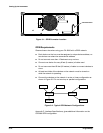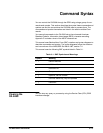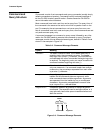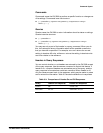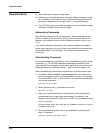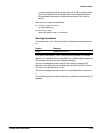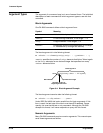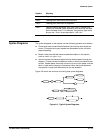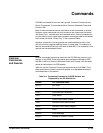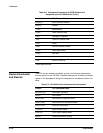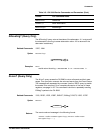
Command Syntax
Programming
3 --- 8
H Enter commands in upper or lower case.
H Precede any command with blank characters. Blank characters include
any combination of the ASCII control characters 00 through 09 and 0B
through 20 hexadecimal (0 through 9 and 11 through 32 decimal).
H The OA 5000 ignores commands consisting of any combination of blank
characters, carriage returns, and line feeds.
Abbreviating Commands
Many OA 5000 commands can be abbreviated. These abbreviations are
shownincapitalsinthecommand’s listing in the Commands section. For
example, the command DISPlay can be entered simply as DISP or dis-
play.
If you use the HEADER command to have command headers included as
part of query responses, you can further control whether the returned head-
ers are abbreviated or are full-length. The VERBOSE command lets you
control this.
Concatenating Commands
You can concatenate any combination of set commands and queries using
a semicolon (;). The OA 5000 executes concatenated commands in the
order received. Concatenating commands is useful when you want to avoid
events generated by conflicting settings — see Conflicts on page 3---40.
When concatenating commands and queries you must follow these rules:
3. Completely different headers must be separated by both a semicolon
and by the beginning colon on all commands but the first. For example,
the commands ATT:DB 15 and DISABLE OFF would be concatenated
into a single command:
ATT:DB 15;:DIS OFF
4. Never precede a star (*) command with a colon:
ATT:DB 10;*OPC
5. When you concatenate queries, the responses to all the queries are
concatenated into a single response message. For example, if the
display mode is dB and the attenuator is 20 dB, the concatenated query
DISP?;:ATT:DB?
will return either DISP DB;:ATT:DB 20 if Header is set to on, or DB;20
if Header is set to off.
6. Set commands and queries may be concatenated in the same mes-
sage. For example:
ATT:DB 15;DISP DB;DIS?;:ADJ?
Command Entry





